The Macro2Micro Project
The story of how the first two NNR Collections on the Virtual Microscope came to be made, along with some of the creative work inspired by the project.
The Vision
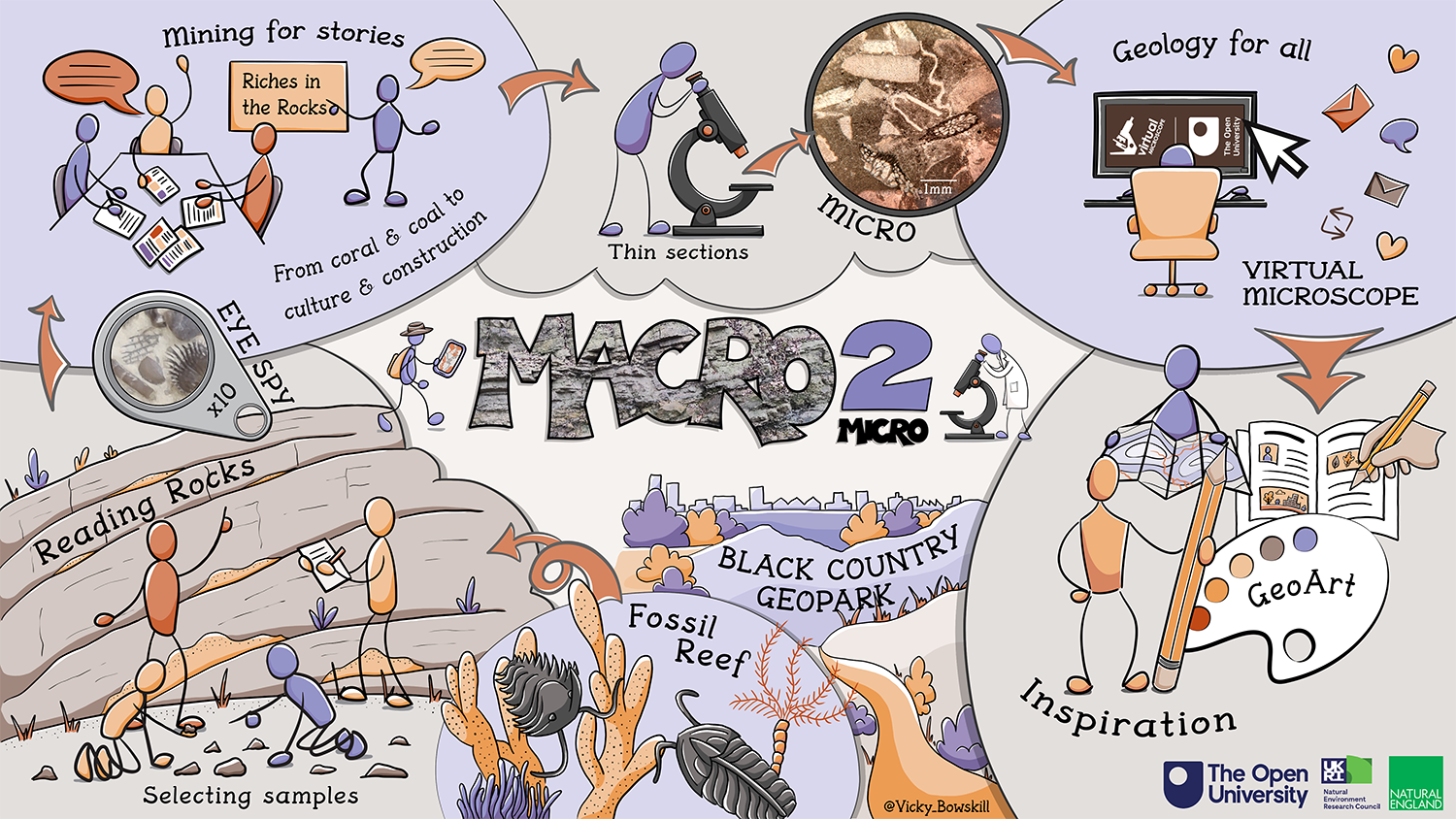
Back in 2022, Clare Warren and Jonathan Larwood were planning Elaine Hooton's research studentship project "Written In Stone: Evaluating Geodiversity as a Natural, Social and Economic Asset". At one of their meetings, discussions broadened out into an idea of framing public engagement with local geology through the medium of their local green spaces - National Nature Reserves (NNRs).
With a clear outline of the concept, the next step was to seek some funding to support the project activities. Clare and Jonathan chose to apply to the Natural Environment Research Council (NERC) via their 'Growing Roots' scheme, which aimed to explore innovative approaches to engaging the public with environmental science. A first step was choosing a location. Jonathan proposed a world-famous fossil locality, the Wren's Nest National Nature Reserve in Dudley, along with another nearby NNR at Saltwells. They invited Graham Worton, Keeper of Geology at Dudley Council, to help write the bid, which was submitted in May 2023. The idea was for a group of local 16-18 year olds to participate in interactive days both in the field at the reserves and also at the Open University. Although founded in geology, the team wanted to prompt creative responses and artistic interpretations; hence the need for a project artist, Vicky Bowskill. Another key theme of the project was evoking and capturing the group's experiences at all scales from the macro (outcrop) to the micro - which is where the Virtual Microscope came in!
Local communities may hear the geological stories of their familiar locations framed in the macro scale, but rarely have the opportunity to explore those same rocks at the micro scale. So one core aim of the project was to involve the students in the whole process of microscopic study, from collecting samples in the field to observing those same samples under a petrographic microscope.
Two new Collections for the Virtual Microscope, Saltwells and Wren's Nest, would be created, alongside other creative outputs from the students exploring not only the sites' geological and industrial heritage but also celebrating their different personal, affective and artistic responses to their local spaces.
The Recce
Tuesday 1st August 2023
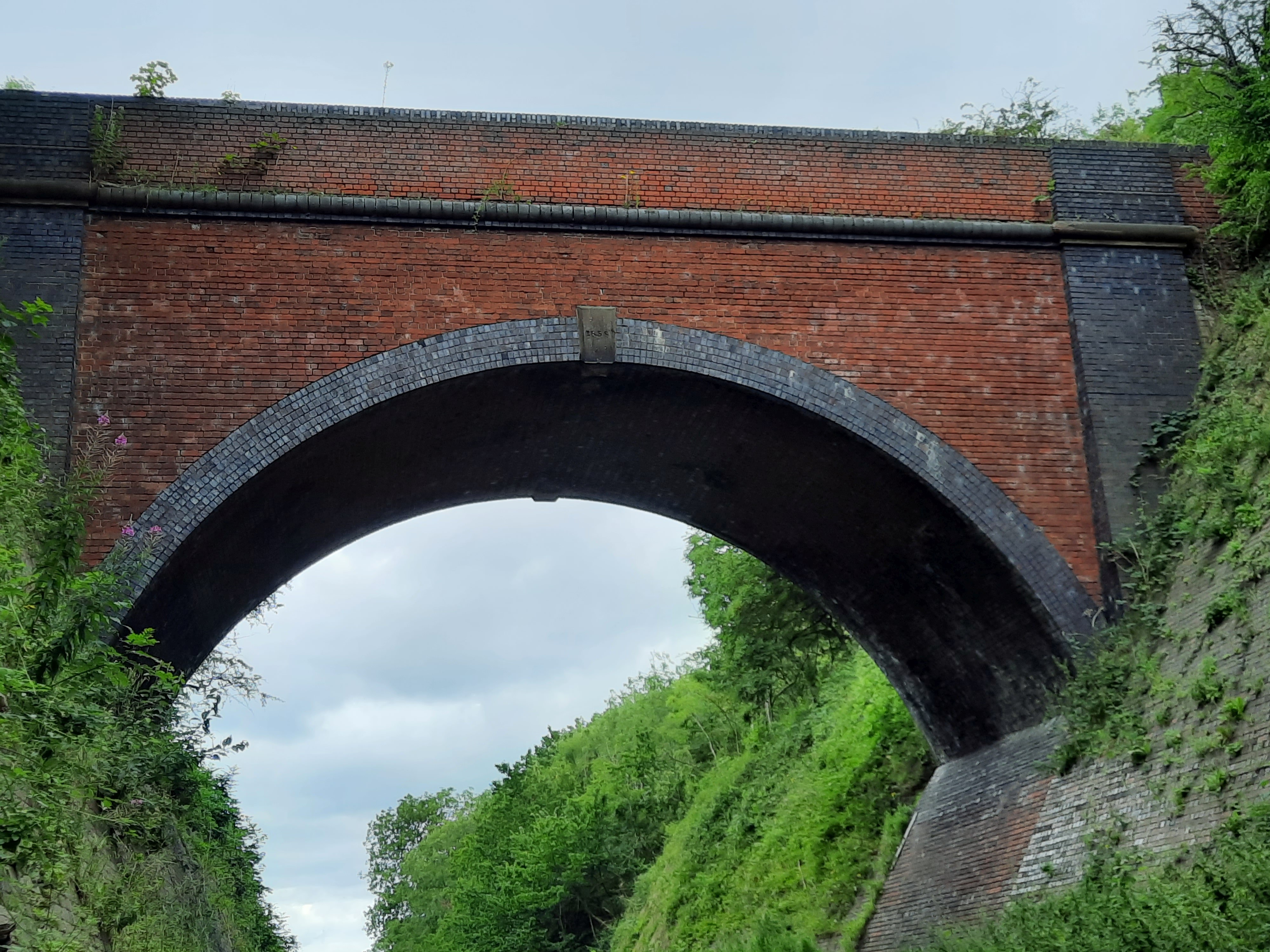
On a rather nondescript day weatherwise, five members of the team (Clare, Jonathan, Vicky, Graham and Tom) met at the quaintly-named Fossil View cul-de-sac for a whistle-stop tour of Wren's Nest led by Graham. An unexpected car ailment meant that Elaine was somewhat late to the party! Soaking up Graham's knowledge of the site, we rehearsed geological stories and grabbed a few small rock samples to get a headstart on making thin sections ready for the group days.
By late morning, we were tramping up the trail to Doulton's Claypit at Saltwells NNR, marvelling at the high bridge at Brewin's Cutting and hunting fossils and sedimentary features in the Carboniferous sandstone intruded by the microgabbro at Highbridge Steps. A convivial late lunch at the Saltwells Inn, peppered with lively discussions of how to lead the student group engagingly from macro to micro, concluded a successful first foray for the team.
Field Day Diary 1: Wren's Nest
Thursday 9th November 2023
In a wet autumn we picked a mercifully dry, cool day for the students' first visit. After a welcome from Graham and an introduction to the Macro 2 Micro project from Clare, we headed into the reserve. Robyn Amos, Geology teacher at King Edward VI College, Stourbridge, had gathered a dozen or so A-Level students from Years 12 and 13, some of them studying Art and others Geology. The first half of the visit was rather subdued, as everyone adjusted to unfamiliar company and tentatively explored their role in the project. As we all listened to Graham conjuring geological and historical landscapes above the muted sounds of the city, breathing in the smell of damp leaf-mould, our imaginations began to stir and stilted conversations loosened, budding offshoot ideas and clashes of creativity. A spell of fossil-hunting in the field, peering at the remains of sea creatures that died over 400 million years ago through hand-lenses, led naturally on to a visit to the Dudley Museum over lunch. Here we set up some petrographic microscopes so the students could view thin sections of rocks collected on the recce - they proved adept at taking photos with their phones poised over the eyepieces!
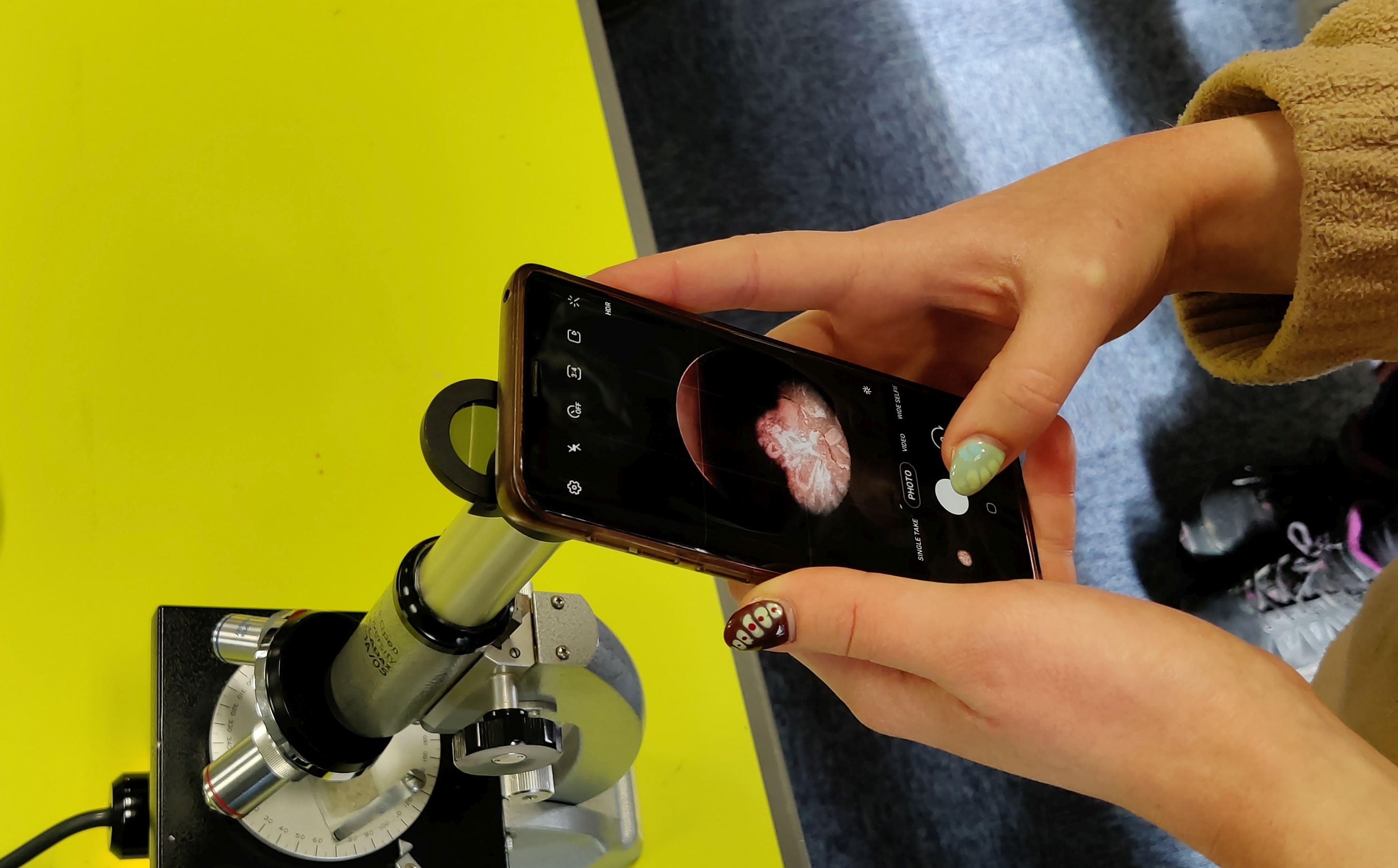
Field Day Diary 2: Saltwells
Thursday 16th November 2023
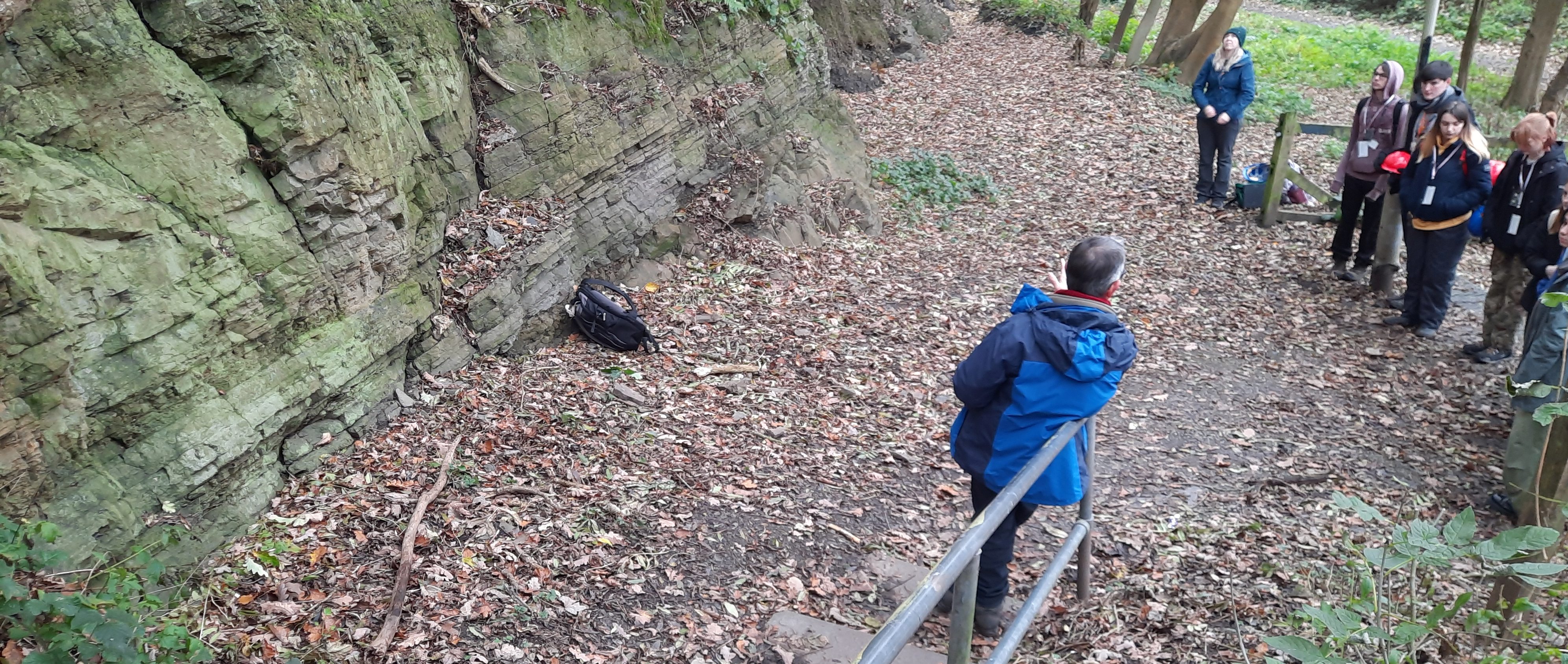
Another dry-ish day for our visit to Saltwells NNR, where the students were dropped at the top of the site near Brewin's Cutting, and we worked our way back to the education centre via Highbridge Steps and Doulton's Claypit together. At the education centre Tom gave a brief introduction to the Virtual Microscope to prompt the students for ideas to enrich and enhance the website; Vicky showed some examples of science-inspired craft, including her fabulous geoweave! Then Elaine set the scene for the students to get creative. Sheets of paper unfurled on tables as small groups scratched heads, sketched and scribbled, queried and quibbled... Some cracking ideas took shape, some snappy and innovative, others more detailed, artistic... and technically challenging!
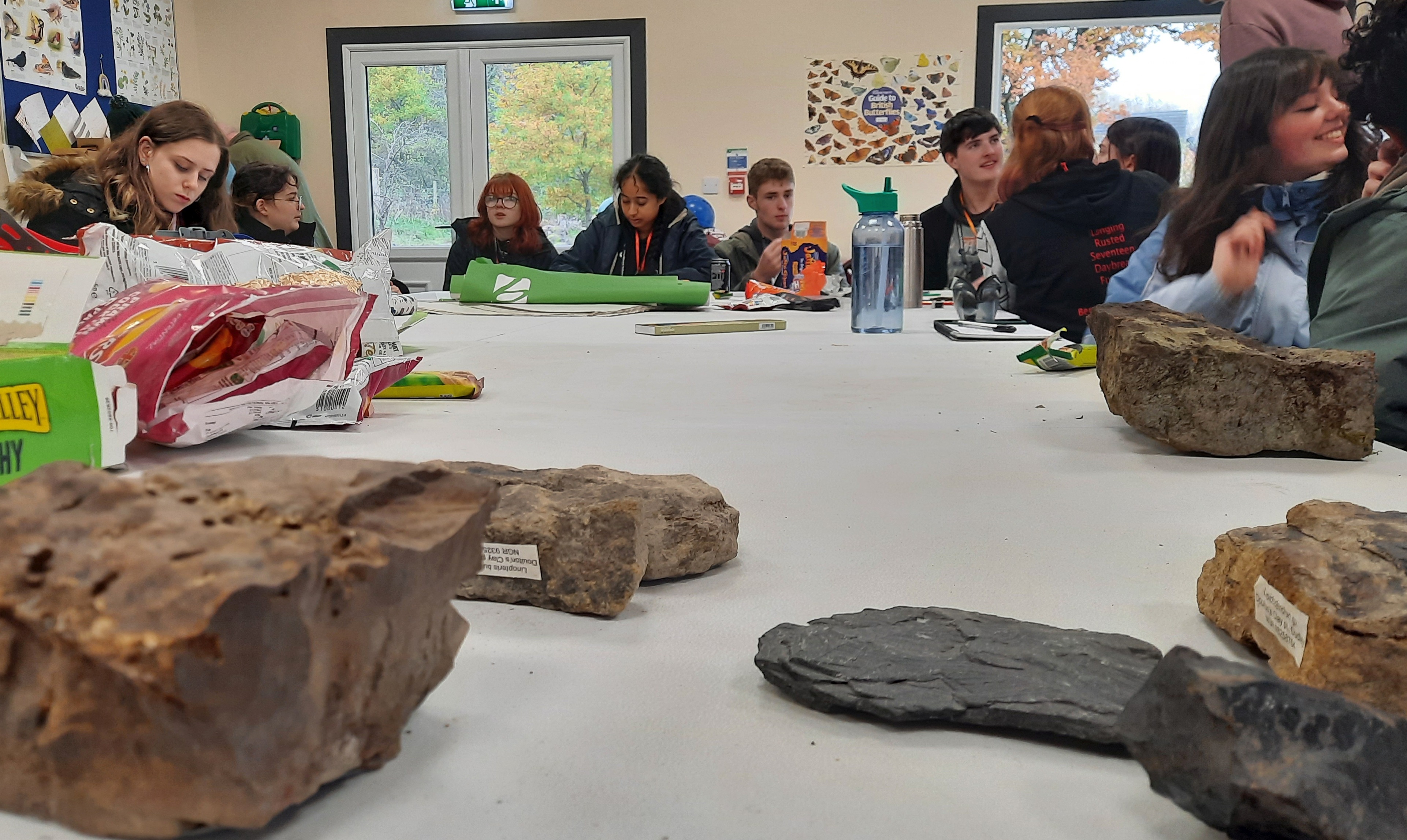
Open University Visit Diary
Monday 15th January 2024
We welcomed Robyn and the students to the OU's Walton Hall campus with a presentation on the infinite variety of Science Communication (Vicky) and an update on progress with the VM samples (Tom) - including a first look at the samples collected by Bea and Daisy. Then it was off for a quick tour of the thin section lab (thanks Kay!) and the virtual microscope scanning labs (thanks Charlie!), followed by lunch in the legendary OU Hub canteen. After lunch, Sneha Ravji, one of our apprentice technicians at the OU, gave a brief insight into her role with the OU's Living Lab as a possible career option for geoscience graduates. Then there was just time for another creative development session, interleaved with grabbing soundbites and written feedback from the students before their departure.
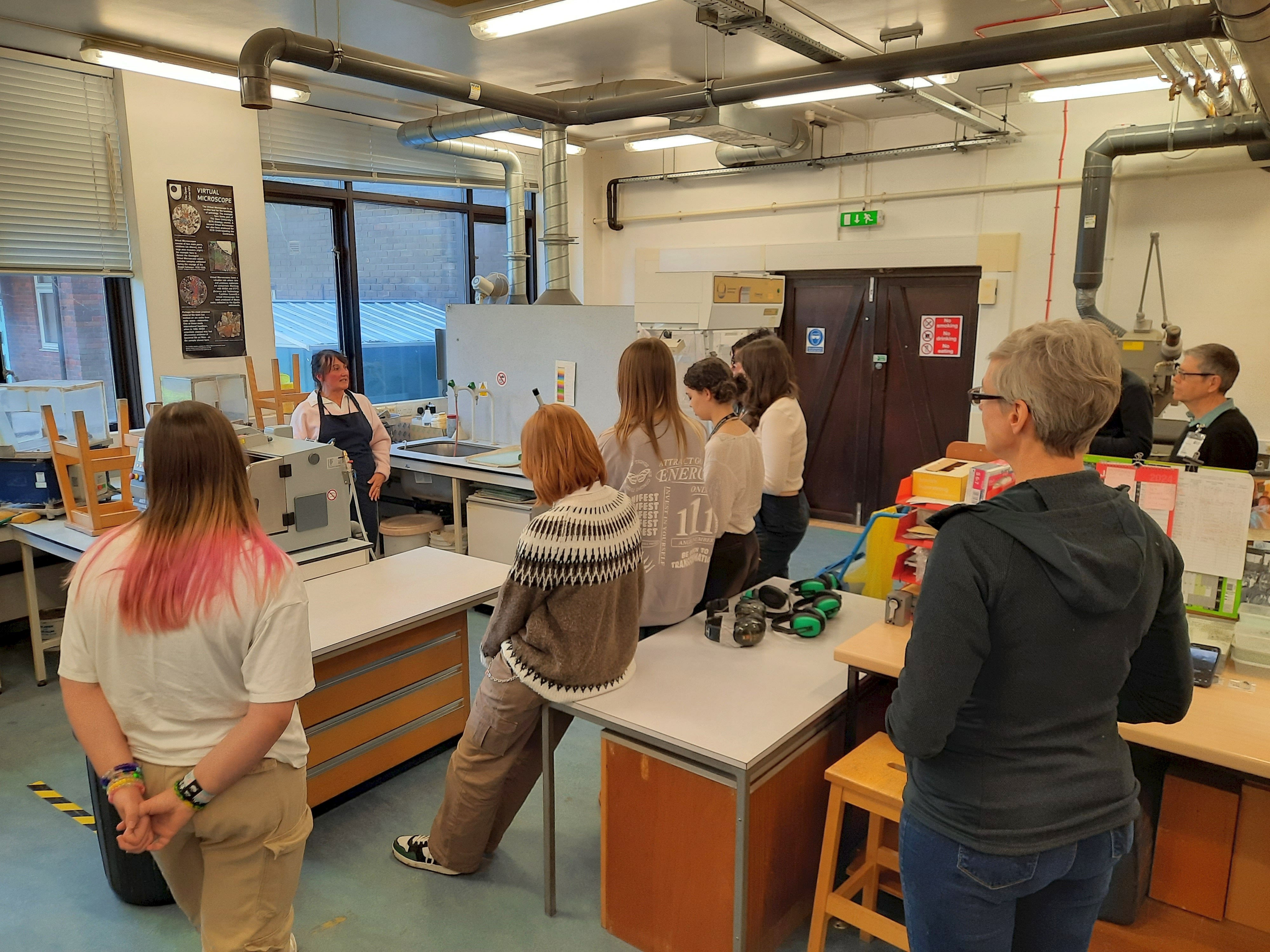
Behind the Scenes
August 2023 to June 2024
Alongside the public-facing facets of the project, work started with the first rock samples collected on the recce. A selection of these were handed over to Kay Knight in the thin section lab at the OU for transforming into thin sections. First, slices of rock were cut using a diamond-rimmed trim saw; these were then ground flat (lapped) and mounted on glass slides. Several samples were too fragile to be processed further without breaking, so these were impregnated with resin to hold them together. The mounted rock slices were then ground down in batches until they were about 30 microns (0.03mm) thick - roughly the thickness of a human hair. Finally, each section was finished by hand, being carefully checked to ensure it was the correct thickness.
These thin sections were then scanned by Charlie Oldman using a Leica DM 2500P polarising microscope hooked up to a Leica fast acquisition digital microscope camera (DFC400). Charlie used Leica Power Mosaic software to stitch together a mosaic of many high-resolution images into a single, seamless image; some of these images were >1 GB in size! For each sample, Charlie took one scan under plane polarised light and another under crossed polars. He then carefully aligned the two mosaic images in Adobe Photoshop, before using a program called Zoomify to created hierarchical sets of tiled images at different resolutions, which make the final Virtual Microscope image zoomable.
Tom checked the images and uploaded them to the Virtual Microscope website, along with various auxiliary code files; he also created the sample factsheet pages. The VM developer, David Pilgrim, set up the NNR Collection pages and collaborated with Tom and the rest of the team to discuss, advise and implement new features for the site, including a lucky dip function and a clickable stratigraphic column for the two NNRs.
Made in Macro2Micro
Alongside the two new Collections for the Virtual Microscope, Saltwells and Wren's Nest, a range of creative responses and ideas from participants arose from the Macro2Micro project. One of these is the interactive stratigraphic column Strata Stories, which was designed and written by students from King Edward VI College, Stourbridge, using their own digital artwork.
Here are a few more selected outputs:
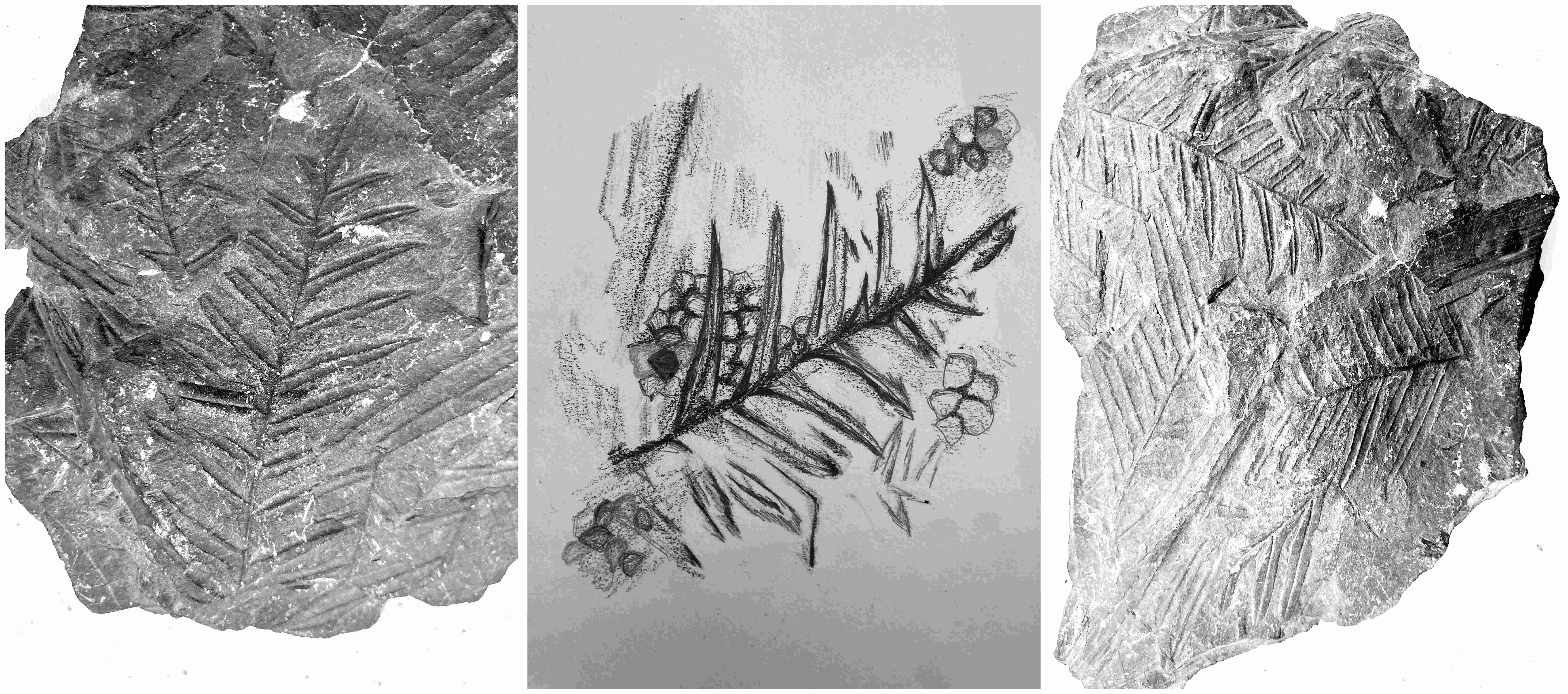
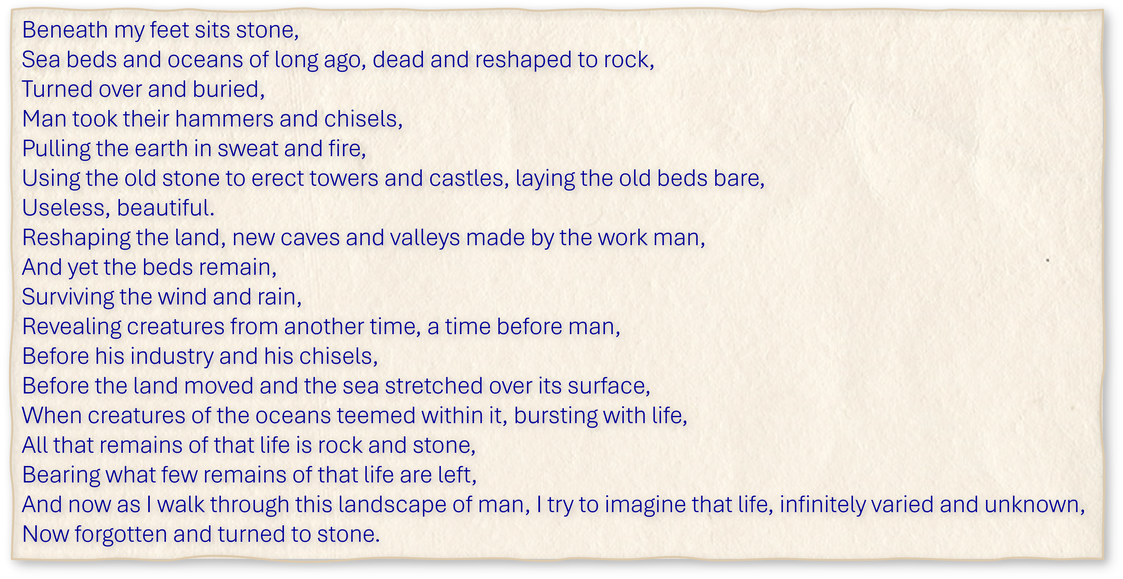
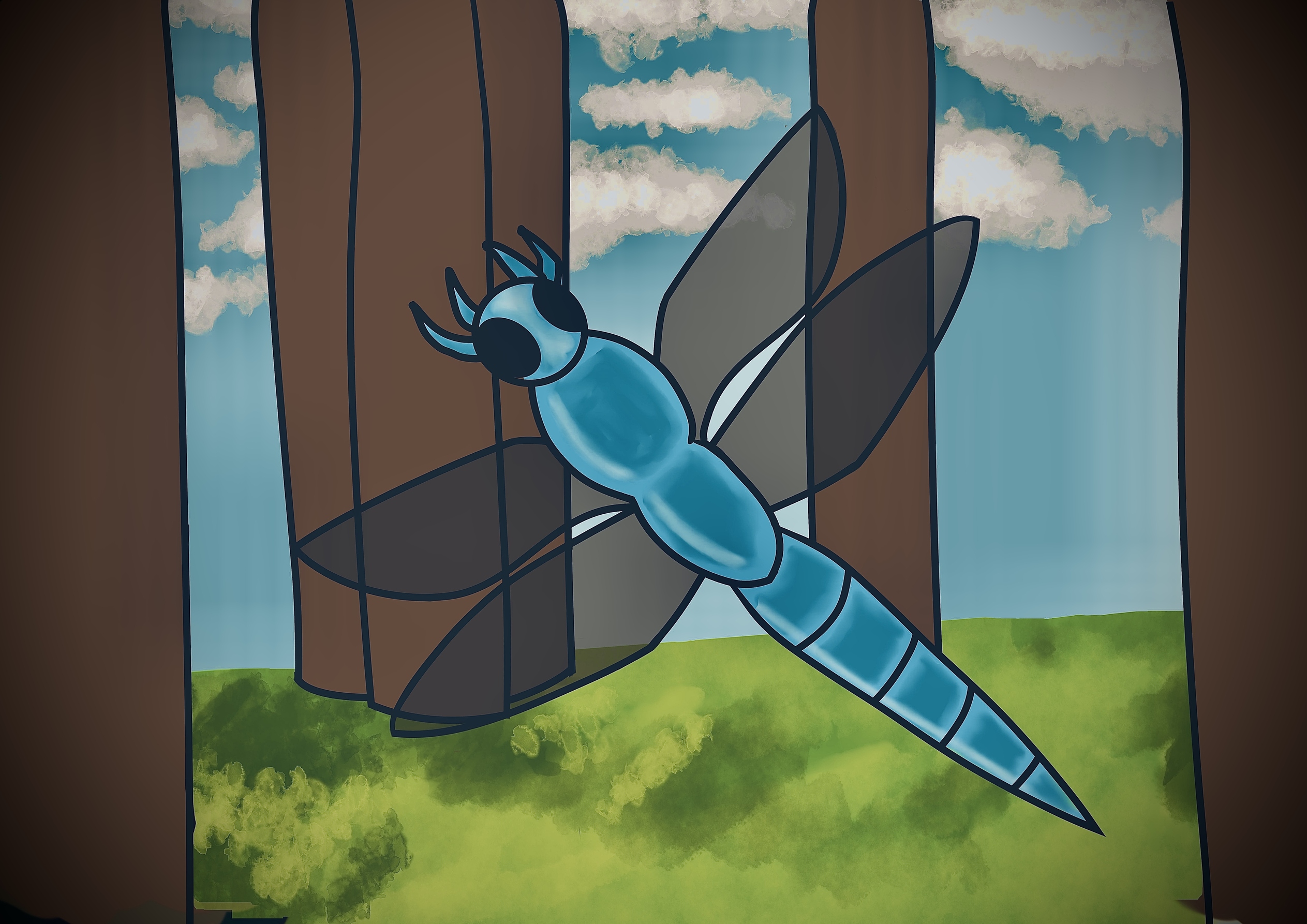
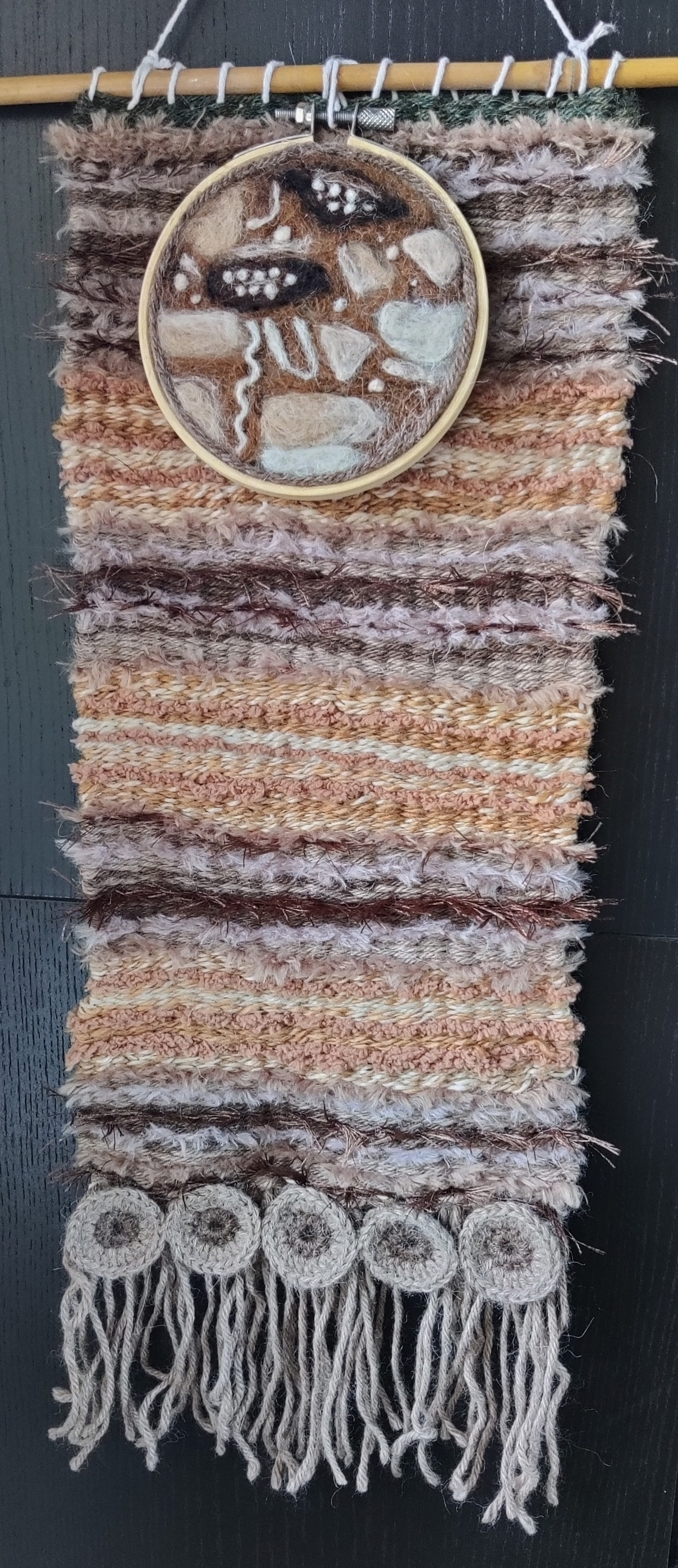
Meet the Team
Any project needs a committed and enthusiastic team to succeed. The Macro to Micro core team brought a fabulous mix of skills and perspectives to the table, blending creativity with science. Thank you to everyone pictured and mentioned below - and many others who were involved in the collaborative days or supported the project in other ways!
| Prof. Clare Warren (Open University) Overall project lead, Clare developed the idea for the Macro to Micro project with Jonathan, assembled the team, planned the activities and knitted everything together. | 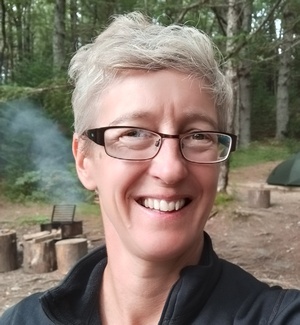 |
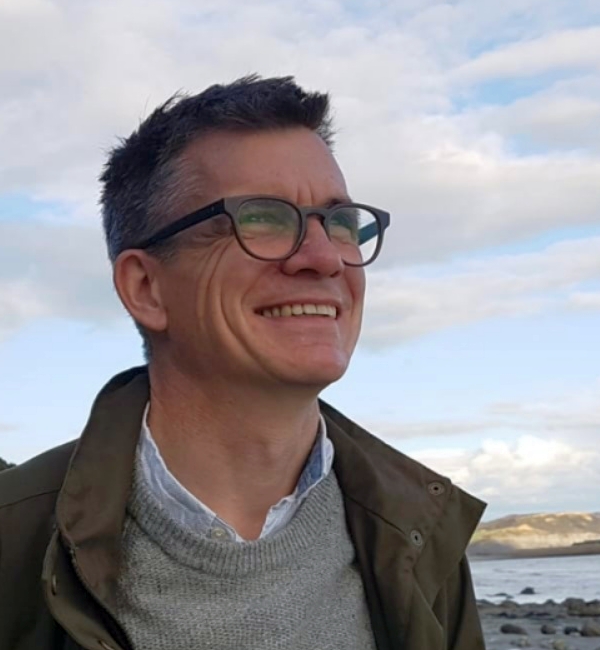 | Jonathan Larwood (Natural England) Along with Clare, Jonathan conceived the vision for the project and forged the partnerships with Graham at Dudley Council. |
| Graham Worton (Keeper of Geology, Dudley Council) Bringing local expertise on the two NNR sites, Graham managed the logistics for our field visits and was our key link to Robyn and King Edward VI College, Stourbridge. | 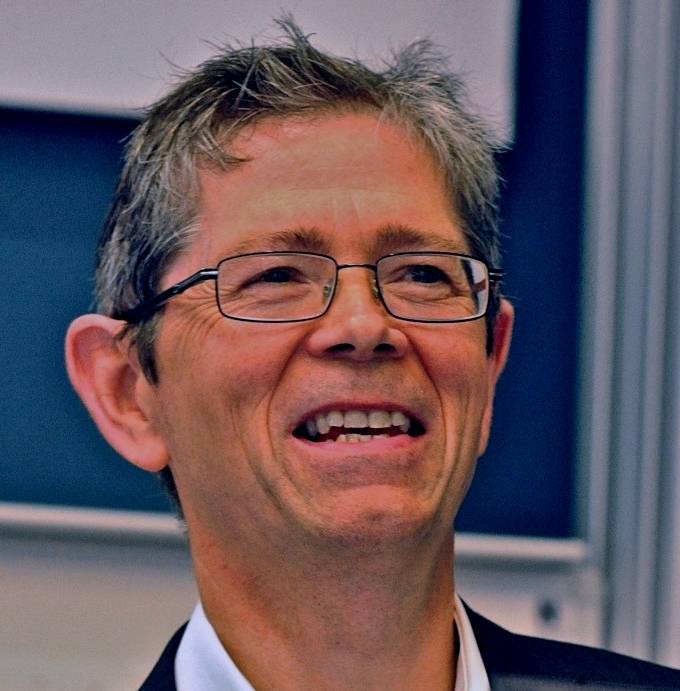 |
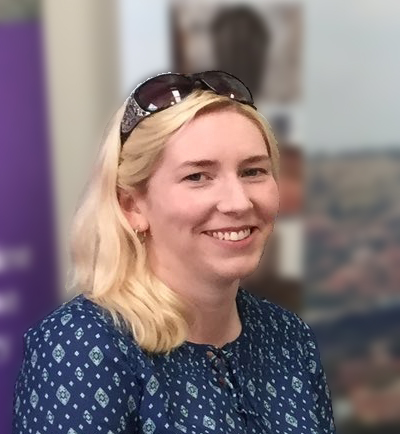 | Robyn Amos (Geology Teacher, King Edward VI College, Stourbridge) Along with Graham, Robyn was our link to the local community. She assembled the merry band of geology/art students who grabbed our somewhat nebulous ideas and found their own focal planes to explore, ably assisted by Vicky and Elaine. |
| Vicky Bowskill (Environmental researcher, OU, and freelance artist/illustrator) So good we actually paid her in real money, Vicky was the creative wellspring of the project, illustrating how science and art can crochet seamlessly together and demonstrating the potential for careers in that tangled, knotty, intricately-patterned space. | 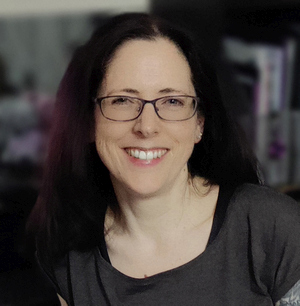 |
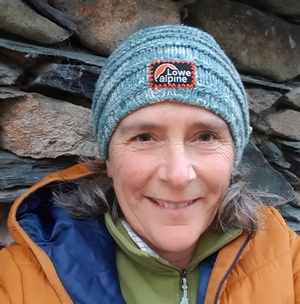 | Elaine Hooton (Geodiversity researcher, OU) Elaine devoted time to this project alongside her PhD work, sorting logistics and keeping us on track, providing an invaluable teacher's eye on project aspirations to keep the academics grounded. |
| Tom Argles (Virtual Microscope, OU) As coordinator of the Micro stuff, Tom managed creation of the Saltwells and Wren's Nest Virtual Microscope images, liaising with Kay Knight and Charlie Oldman who made the thin sections and digital images respectively, then worked with David Pilgrim to develop the new features and content on this website. | 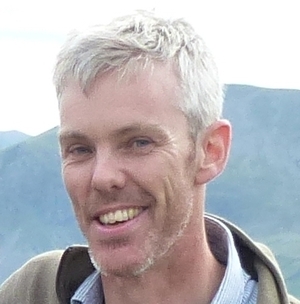 |